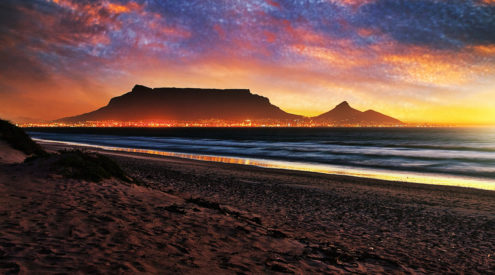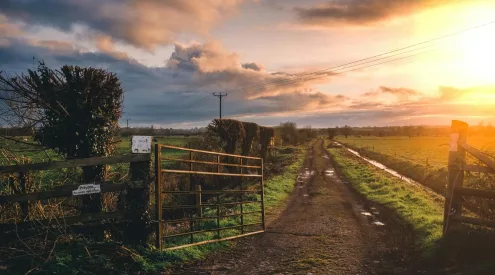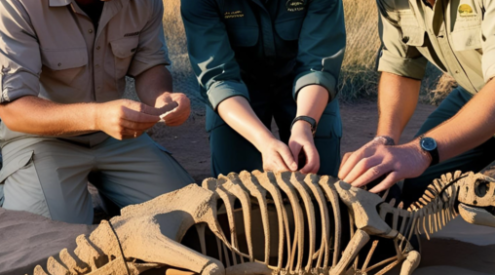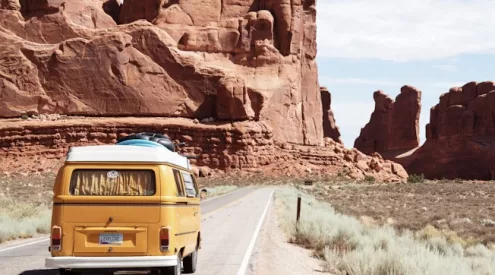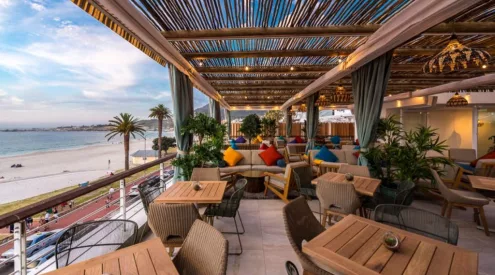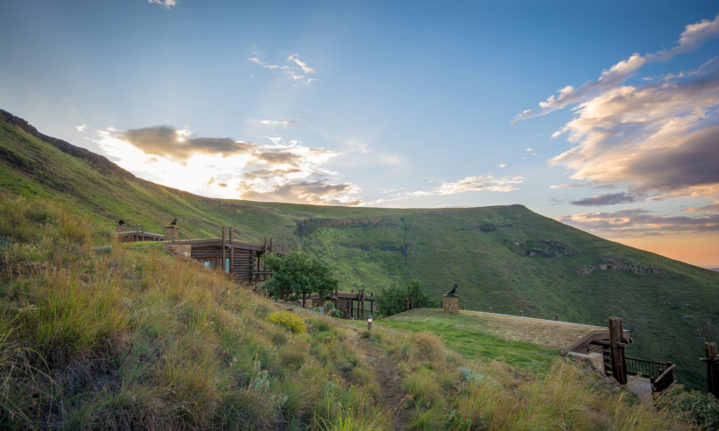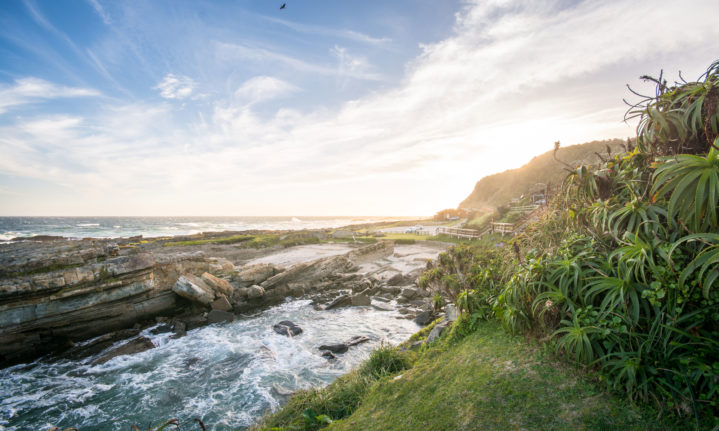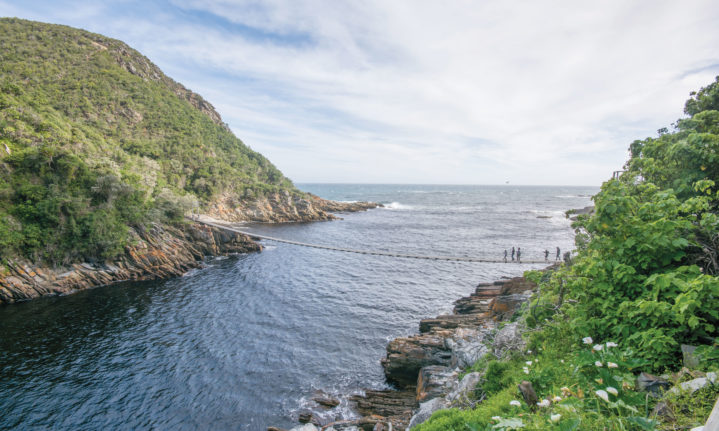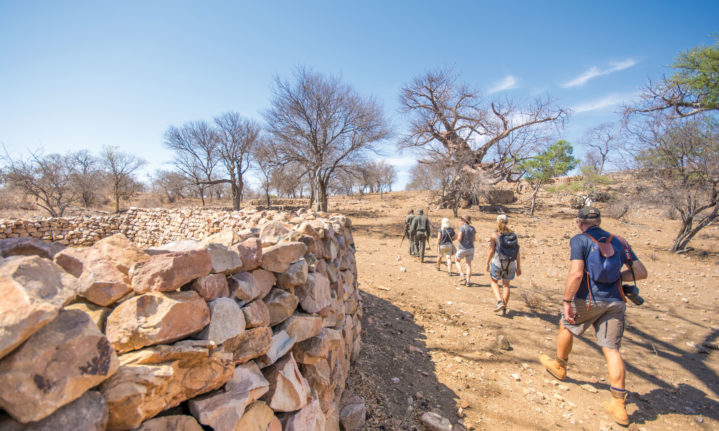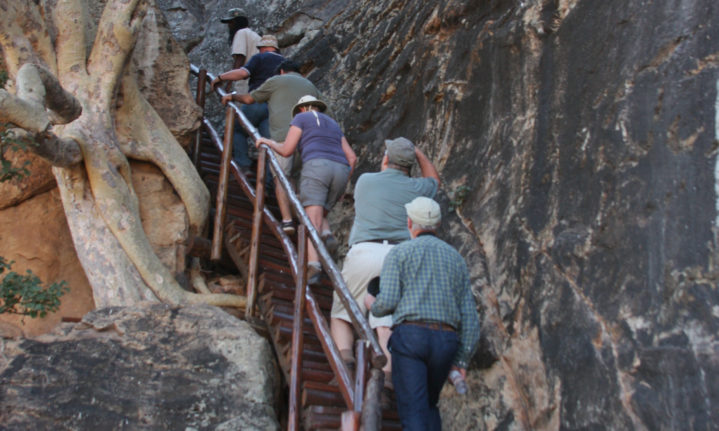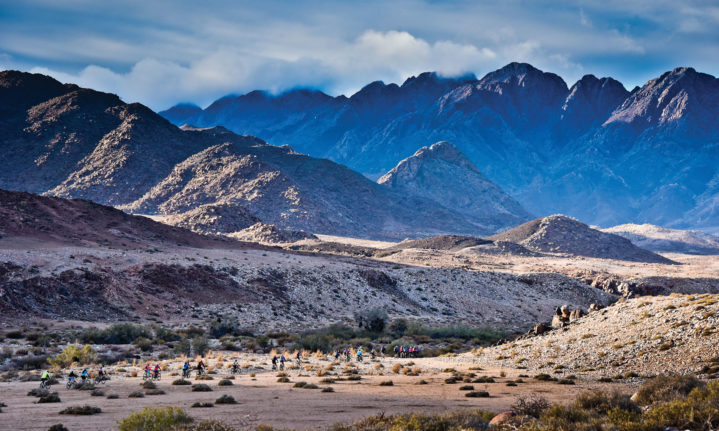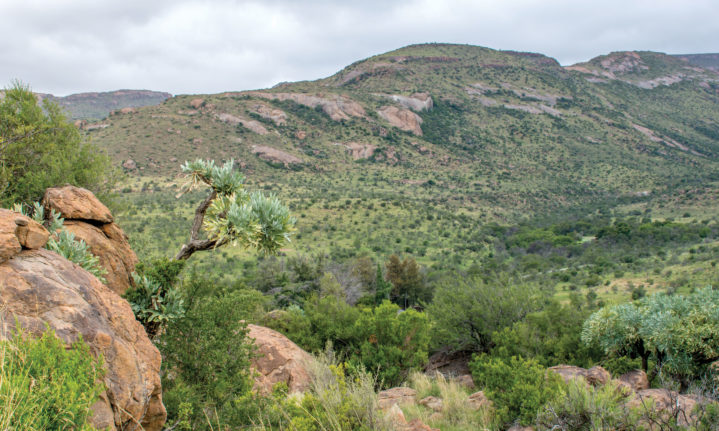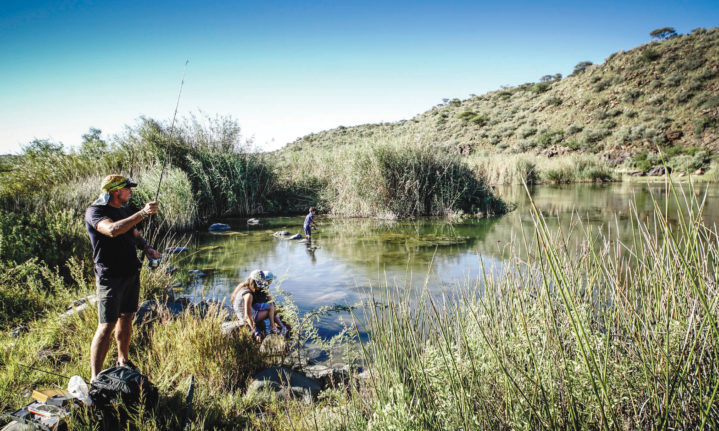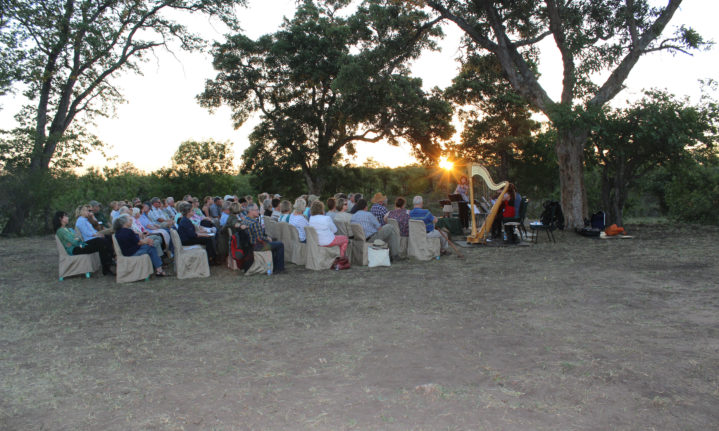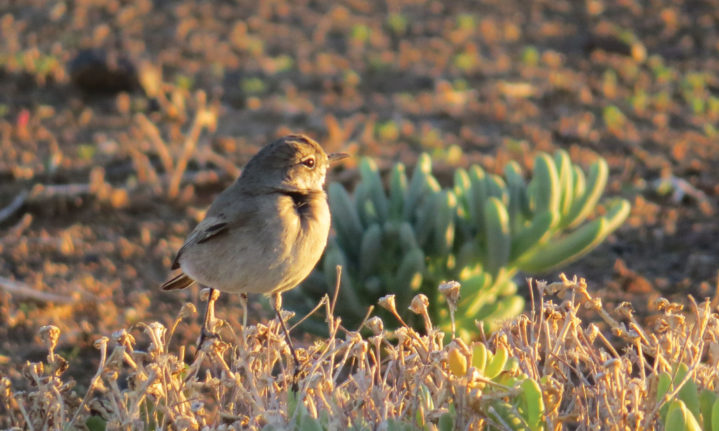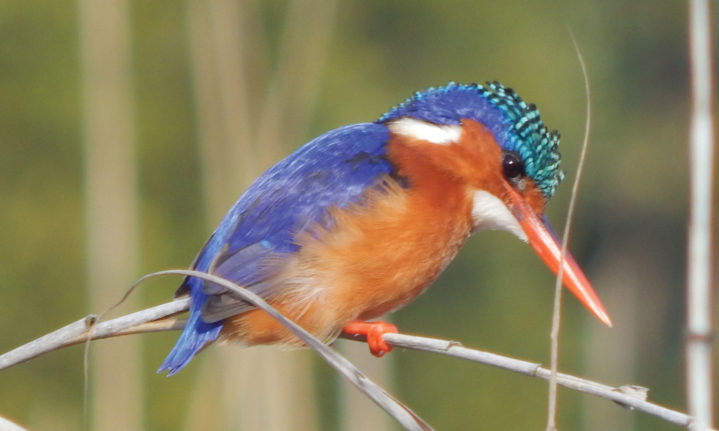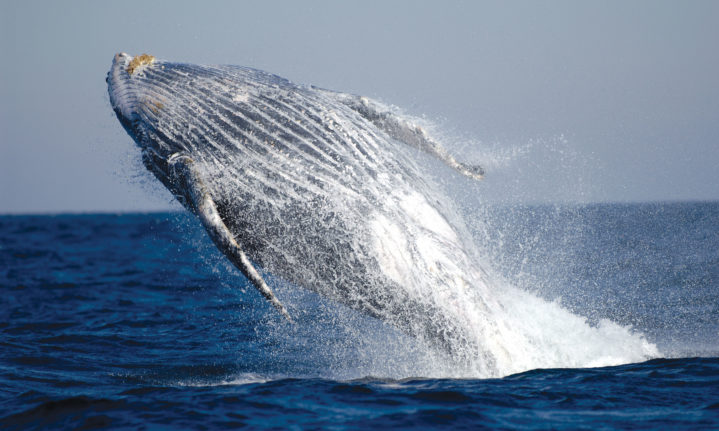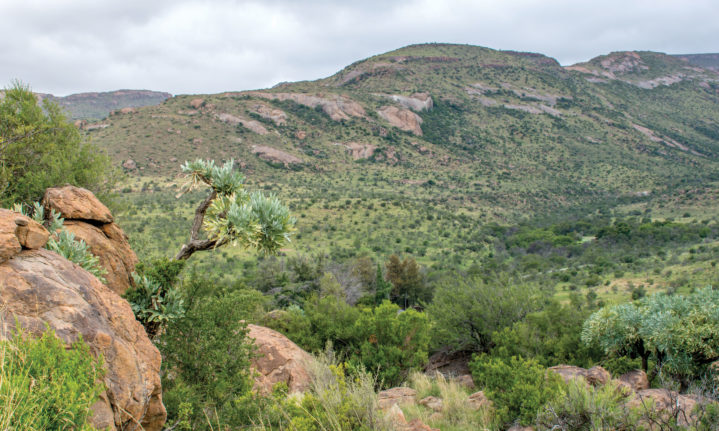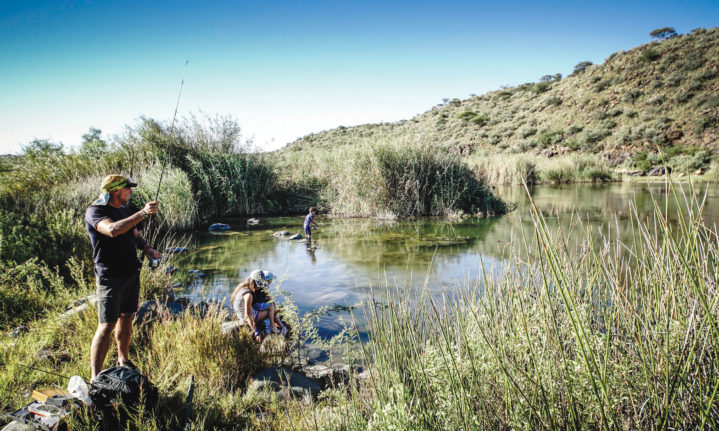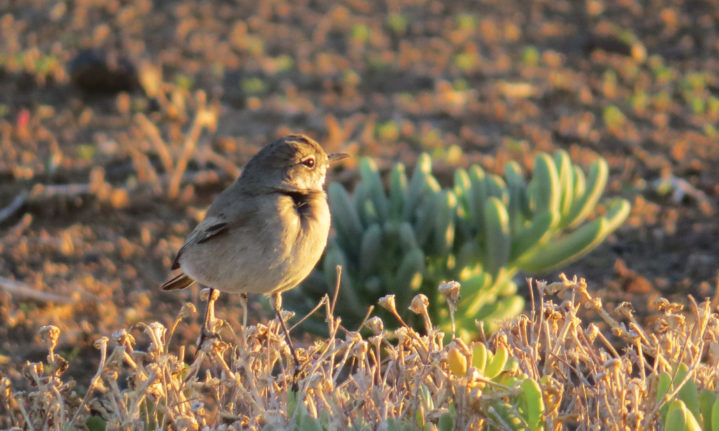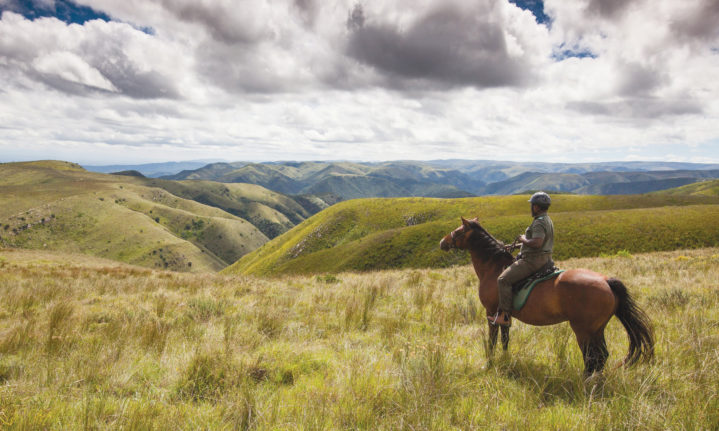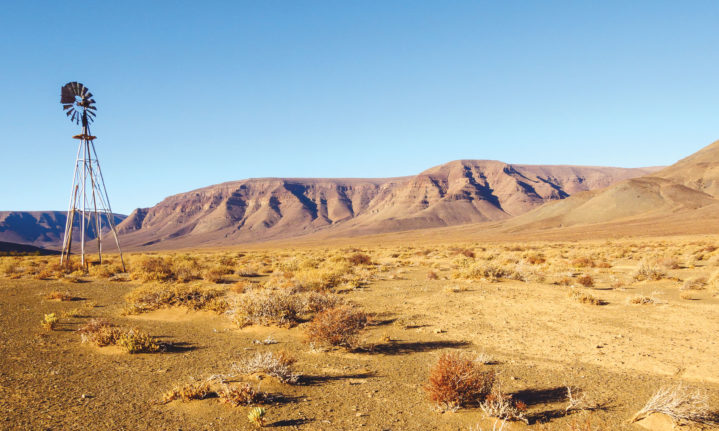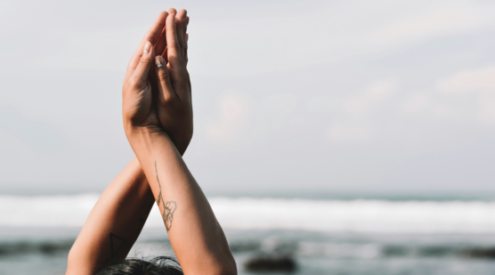Being out in the wilderness is always a delight, but sometimes driving around national parks in a car might not feel quite wild enough. Why not get a little closer to nature with these other sightseeing activities.
1. See the big seven
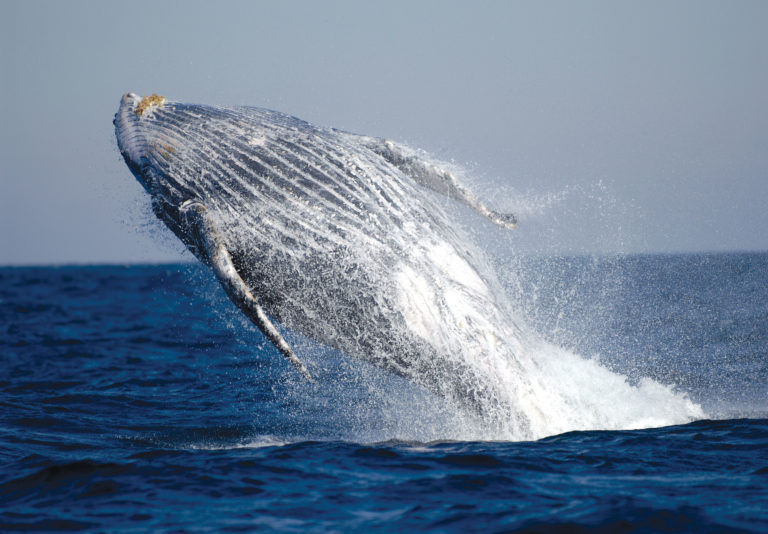
Whales, along with great white sharks, make up the Big Seven.
If you stand on the hills of Addo Elephant National Park, near the Indian Ocean, it’s not impossible to see (with binocs and some patience): elephants and whales, dolphins and lions, black rhinos and black oystercatchers, Cape buffalo and fur seals. Oh, and if you’re extra lucky, a leopard.
Covering just 1,640 square kilometres, the park includes semi-desert, mountains, fynbos, coastal forests and huge dune fields. Offshore lies the Bird Island marine-protected area. The best way to enjoy this remarkable biodiversity hotspot is on a Big 7 tour with Alan Fogarty, a naturalist with 40 years of experience.
The day begins in Port Elizabeth harbour, where you board a 15-metre boat with an upper-viewing deck. You’ll circumnavigate St Croix Island in Algoa Bay, home to the largest population of African penguins in the world, as well as endangered Cape gannets and Cape fur seals. This is also the dolphin capital of SA, with enormous pods of bottlenose dolphins. Bryde’s whales are spotted throughout the year, while humpbacks and southern rights visit during winter. After a harbour-side lunch, you’ll head to Addo’s Main section, where large herds of elephants munch on spekboom thickets, and the rest of the Big Five lurk. – Scott Ramsay
Cost: R3,600 per person, including lunch, entrance and conservation fee, boat tour and guide.
Do it: The tour is a full day, from an 8am pickup at your accommodation. Leopards are the most elusive sighting – you may need to stay a few extra days in Addo to see one. 0723584634 alantours.co.za
2. Spot a bird from a boat

Get up close (and quietly) to local residents, such as this malachite kingfisher, on a river cruise.
The Silver Serpent snakes up the Tour River from Ebb & Flow Rest Camp a few times a day, providing an effortless way to admire the local birdlife.
Just eight guests at a time putter off on an eight-kilometre, 90 minute experience with skipper Mike Raubenheimer. No fitness required, just the ability to embark and disembark.
This is slow time; a chance to cover a lot more ground than the average person could in a canoe, with a lot less effort, and to hope for sightings like turacos flashing red armpits as they fly overhead, a malachite kingfisher with a meal as little as a metre away, or puffadders swimming across the river. – Janine Stephen
Cost: R150 per adult, R100 per child, conservation fee R41 per person.
Do it: The trip is offered by Wilderness River Safaris Eco Boat Cruises. Avid birders should note that Mike is not an official bird guide or avian expert. Take a jacket for the cool breezes, a snack and (if it’s that time) a sundowner. And don’t forget the binos. 0824409807 wildriversafaris.co.za
Where to Stay
Ebb & Flow Rest Camp in Wilderness is divided into two section: South had self catering forest cabins , family cottages and log cabins; most sleep four, from R782. North has budget rondavels with shared ablutions from R429. 0448771197 sanparks.org
Storms River Rest Camp also has forest huts and cabins, chalets and cottages, but the best choice here is an Oceanette unit with unobscured views of the sea (and dolphins). From R537,50 per person (sleeps four), camping from R290. 0422811607 sanparks.org
3. Explore a lost city
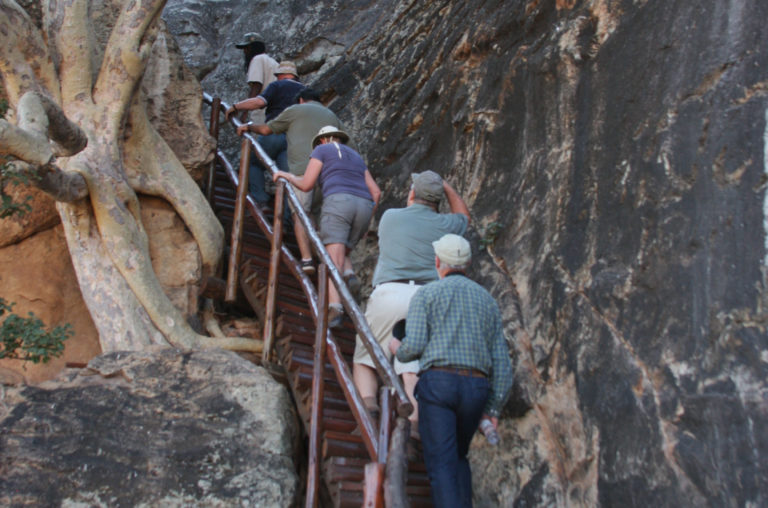
Rocks with pole holes in them are some of the architectural remains at Mapungubwe, dating between 1000 and 1300 AD.
This park, covering the area where the great Shashe and Limpopo rivers meet (at the intersection of Zimbabwe, South Africa and Botswana), offers some of the wildest big-game viewing in southern Africa. Elephants wander around rest camps almost daily and there’s excellent birding. But it also offers a magic found only if you explore the beating heart of the park – Mapungubwe Hill – on foot. It was once the seat of a lost city at the heart of civilisation in southern Africa almosta millennium ago.
On the guided Heritage Tour you’ll climb the 147 steep steps to the top of the hill where you’ll learn about the opulence of the kingdom’s royals, treasures such as the golden rhino uncovered here, and the social hierarchies that defined this intercontinental trading culture, which thrived from the 11th to 13th centuries. You’ll also see the graveyards of the royals, and share the views once held by sentries on the lookout for enemies below. – Taryn Arnott
Cost: R245 pp. Museum tour R60. A combo ticket is R280. Conservation fee R49 per person.
Do it: The Heritage Tour is two hours, starting at 7am, 10am or 3pm/4pm from the museum near the main gate (in the eastern sector of the park.) It’s a short walk. 0155347923
4. Get a (small) taste of the Otter Trail
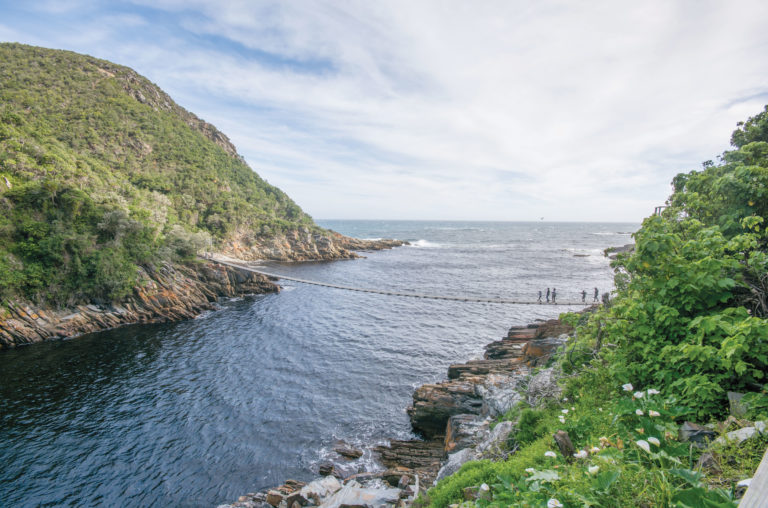
The two-hour Mouth Trail leads through forest, past a cave to a suspension bridge over the Storms River.
This iconic hiking trail has to be booked a year or more in advance, but day visitors to the Tsitsikamma section of Garden Route National Park can do the six-kilometre Waterfall Trail, which is the same route covered by hikers on day one of the Otter.
The Storms River area is wild and elemental, where thick indigenous forest meets the unrelenting sea in a series of cliff faces. The trail is undulating and offers views of the pounding ocean below and patches of pebbled beach, ending at an impressive waterfall that pools and then flows to the ocean. – Melanie van Zyl
Cost: No cost for hiking, except the conservation fee R55 per person. Trail maps cost R16.
Do it: The Waterfall Trail is best tackled as a full-day excursion; it’s a four-hour return trip but don’t rush it. Pack a picnic and take it slowly because the route can get strenuous in places, with rocky climbs and steep stairs. It starts from Storms River Rest Camp.
Alternative option: To experience the area without expending too much energy, hop on the Spirit of Tsitsikamma, which takes visitors on a 30-minute boat trip to the bottom of the gorge that lies beyond the Storms River suspension bridge. There are often sea-mammal encounters on the trip, including Cape clawless otters and whales, and the bridge looks majestic from the water. Young ragged-tooth sharks can also be found in the black waters of the Storms River (those are not just murky shadows!) because it’s an essential breeding area for them. The boat runs every 45 minutes from the old jetty below the bridge (it’s a half-hour walk to get there along the Mouth Trail from the main office at the rest camp). From R202 per person. to the bridge or R367 to see the waterfall from the sea. 0412811607.
5. Do a 24-hour bird hunt
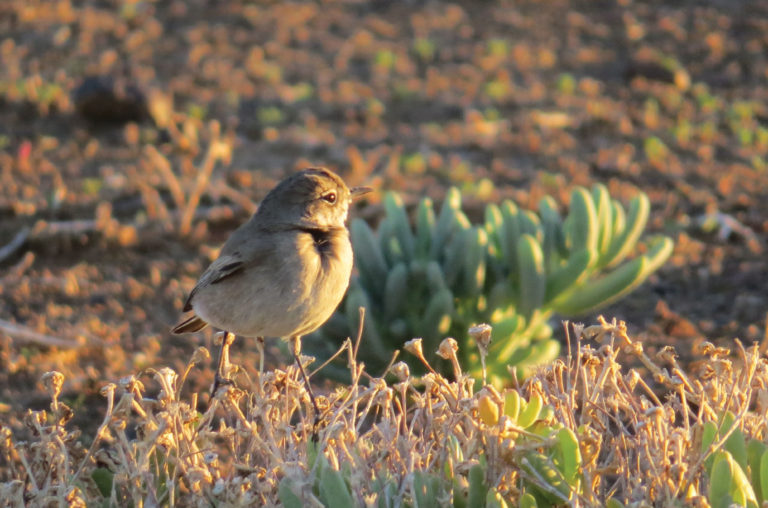
A bird ‘treasure hunt’ is held in other reserves too.
Ground woodpeckers in the Tankwa Karoo? Surely not. If wildly lucky, you could hope for the elusive Burchell’s courser on rocky plains – or expect to see arid-habitat species in the scrub. But finding unexpected treasure is the beauty of the annual Tankwa Birding Bonanza, hosted by the SANParks Honorary Rangers.
For 24 hours, teams of up to four people plus an expert birder roam the park’s biomes, relishing in collecting lists of lovely feathered critters. It’s not so much a competition as a chance to get to know the expanses of this starkly beautiful park and its 180-plus bird species, guided by people who know both intimately. You’ll begin to untangle the differences between the various LBJs that litter the area – the guides really want to teach you the differences between, say, chats (clue: it’s all in the rump).
When I participated, we drove up the Gannaga Pass in search of Verreaux’s eagles (tick) and that woodpecker (we lucked out). We watched waterbirds at Oudebaaskraal Dam, fairy flycatchers on the Renoster River and sailed through the succulent-studded springbokvlakte and Roggeveld scrub in search of larks. You can take it as gently as you like, but after the long day is over, lists are handed in and there’s a celebratory dinner, with heaps of lucky draws. – Janine Stephen
Cost: This year it was R1 500 per person sharing, self-catering, for the weekend (two nights). Daily conservation fee R41 per person. Next year’s event may change to a fully catered experience.
Do it: Next year’s dates are not set yet, but they are looking at spring (September or October). Participants stay at the Tankwa Guesthouse complex, which has units sleeping from two to eight people (note that you’ll have to share on the birding weekend). [email protected]
The West Coast National Park’s annual event usually happens in wader-rich February; others take place in Karoo National Park (larks galore!), Mapungubwe (Meve’s starling, tropical boubou), Marakele (Cape vultures), Mokala (pygmy falcon) and Mountain Zebra National Park (Drakensberg rock jumper).
6. Track cheetahs
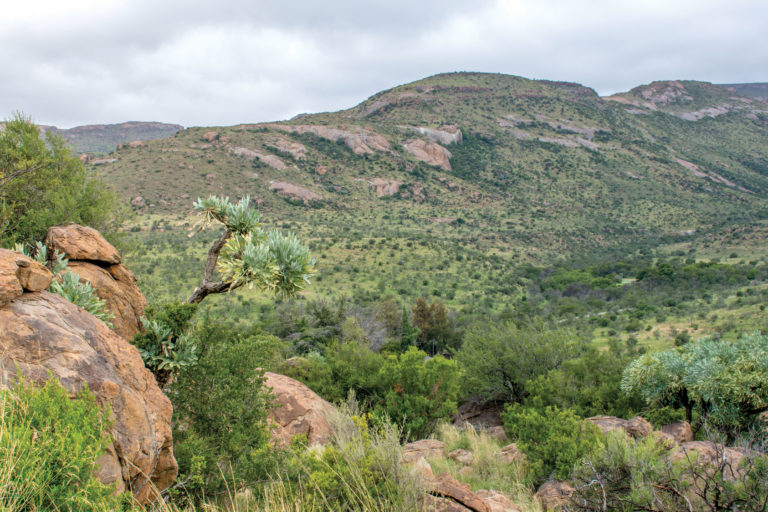
Two of the six cheetahs resident in these hills are collared, allowing rangers to keep tabs on them.
Initially proclaimed to protect the Cape mountain zebra when just 11 of these animals were left, Mountain Zebra National Park also offers the unique opportunity of seeing cheetahs ethically and respectfully in their natural environment. The beautiful hilly landscapes and sprawling plateaus, home to herds of plains game, are the ideal environment for these cats – the first big predators in the park, introduced just 10 years ago. Being the second-most endangered carnivore in SA (wild dogs are first), they require constant monitoring. In order to fund the costs, park authorities decided to open up these conservation efforts to the public. It all starts with a morning game drive (bonus: you’ll be taken into private parts of the reserve) and then the guide will try to pinpoint the position of the cat coalition. Once located, you’ll step out the vehicle to get closer to the cheetahs on foot. – Melanie van Zyl
Cost: From R400 per person. Daily conservation fee R49 per person.
Do it: Set aside four hours for this activity, which starts in the early morning from the main rest camp. Advance booking is required, and a minimum of two people (no kids under 12). 0488015700
7. Land a yellowfish
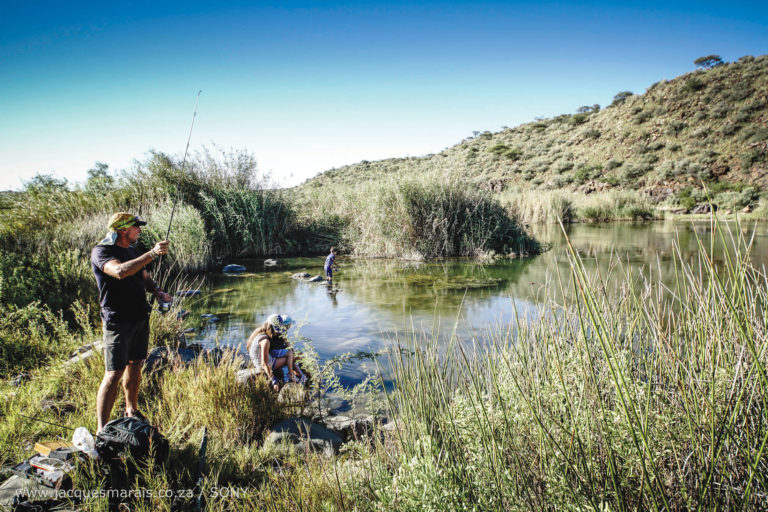
The Riet River is lined with several perfect spots to cast a line – and wait.
This swathe of prime savannah thornveld near Kimberley is not a place you’d expect to encounter a wary ‘yellow’. But visitors who venture into the far north-eastern corner of the park will find the Riet River. A number of angling spots along this meandering watercourse have attained legendary status among anglers, with both small- and large-mouth yellowfish teeming at sites such as De Krans, Kleinbek and Grootbek. Deep, limpid-green pools – dotted with floating rafts of river grass – line swirling eddies along the river banks.
I had my whole family in tow, so we approached the river, via dense reed beds a-twitter with birds, rather less quietly than I’d hoped. On my second cast, half a metre of shimmering, large-mouth yellow darted with intent for my nymph. He didn’t strike but kept following my fly on just about every cast. The closest I got to landing this beaut was when it sideswiped my fly with its tail in an almighty splash before disappearing. – Jacques Marais
Cost: Fishing is R86,86 per day; you will need to obtain a fishing permit at a post office before arrival. Conservation fee R41 per person.
Do it: You need a high-clearance vehicle to reach the angling sites. Info about fishing conditions and regulations is available at Lilydale camp.
8. View game on horseback
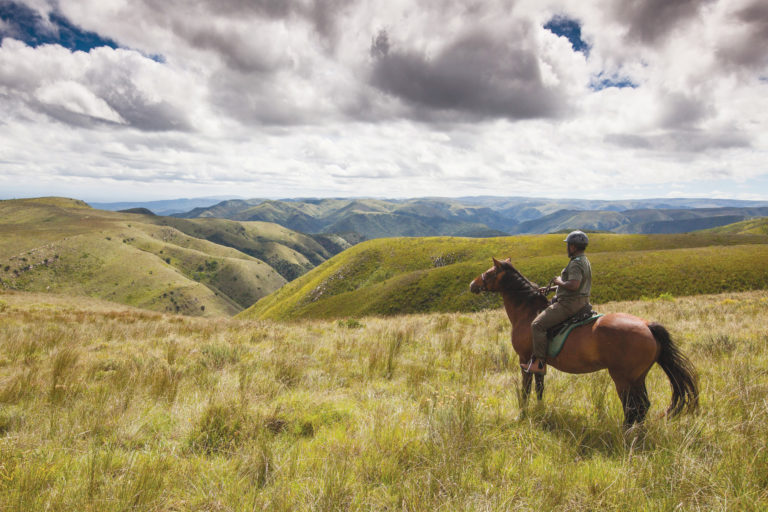
You can explore Addo’s wilder, rugged Nyathi sector on a horse, and get closer to skittish game than you would in a vehicle.
The snort of a black rhino ricochets through the dense thicket. Our horses stop, their ears and eyes alert to its presence. Taking our cue from the horses, we look from our elevated position on the saddles and, sure enough, we can see the horn of the ancient pachyderm, poking out the bush like a periscope. The scent of our horses masks our human smell, and after a few seconds the normally irascible rhino carries on browsing.
A few minutes later, our guide leads us into more open terrain, where we encounter a bull elephant, feeding nonchalantly on juicy spekboom. Then a herd of zebras wanders past, perhaps wondering why their distant cousins forgot to put on their striped uniforms this morning. A small group of kudus enter the fray, almost within touching distance of us.
Seeing Addo Elephant National Park on horseback is the wildest way to experience the most naturally diverse park in the country, home to the Big Five and five of SA’s seven biomes.
Guests don’t need to be horse-riding experts. A slow, steady walking pace is maintained, allowing for close encounters with big and small wild animals. Of course, there is always a chance of encountering lions, which adds the necessary frisson. The area is usually checked by rangers before horse trails are conducted – if predators are around, a different area is used that day. – Scott Ramsay
Cost: From R504 per adult and R252 per teen
(no children under 16). Conservation fee R69 pp.
Do it: Two-hour rides are taken morning and afternoon, leaving from Main Camp. Group size is a maximum of seven and for people weighing under 90kg. 0422338600
Where to stay:
Addo
Spekboom Tented Camp in the main sector has the best views. From R939 for two. 0422338600 sanparks.org.za.
In Port Elizabeth, stay in Central.
Kamberg
Kamberg Camp offers easy access to the cave, has a San art interpretive centre and is famed for
fly fishing. There are six thatched chalets. From R390per person sharing (sleep six). Camping R70 per person. 0338451000 kznwildlife.com
9. Hike to see San rock art
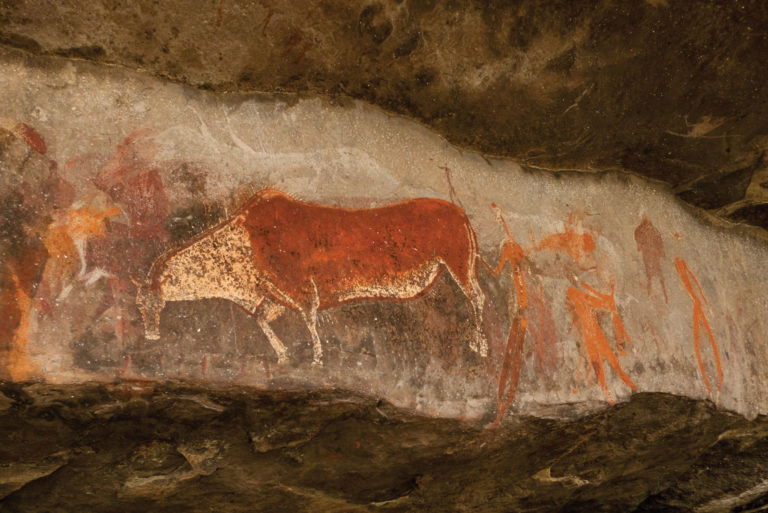
The dying eland, known as the ‘Rosetta Stone’ of rock painting.
A bright spring morning found our group of hikers and a guide making the steep ascent to Game Pass Shelter, so named because it lies along the former migratory route of antelope. This overhang in the Central Drakensberg is perhaps the most important rock-art site in South Africa. Prof David Lewis-Williams has called it the ‘Rosetta Stone’ of rock painting, as it was instrumental in unlocking their meaning: representations of the world hereafter glimpsed by shamans during their trances.
It’s a stiff hour-and-a-half trudge from Kamberg Camp. The mouth of the cave loomed above as we switchbacked up the incline. Then the gorgeous panels of art appeared. Centrepiece was an image of a dying eland. It was the finest rock art I’d ever seen; the overlapping eland seeming to leap gracefully from the rock. Their bodies were beautifully modelled, the details exquisite, colours vivid. It was as though the veil of rock that held back the other world was about to burst, allowing a torrent of ancestral spirits to pour from the sandstone. The art is so rich and complex that your mind begins to hum, trying to understand what you’re looking at. – Justin Fox
Cost: R90 per person (reserve entry R40, guide R50).
Do it: Game Pass Shelter may not be visited without a guide; book one at Kamberg Camp. The hike is steep but relatively easy. Kamberg Reserve is part of uKhahlamba-Drakensberg Park.
10. Learn about medical plants
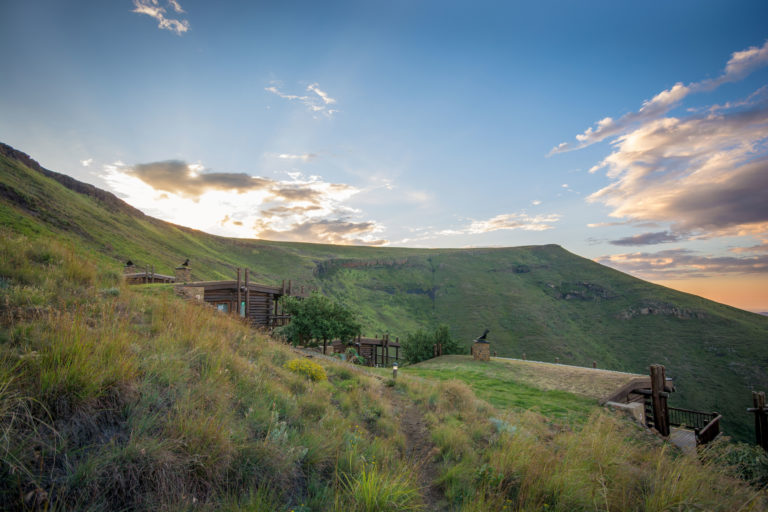
These sandstone cliffs not only glow gold at sunrise and sunset, the slopes below are rich in healing plants.
Known for its sandstone peaks and protected grasslands, Golden Gate is also home to many endemic plants that play an important role in Basotho culture.
A great way to explore these is by joining a guided hike with a traditional healer, which starts at the Basotho Cultural Village, on the eastern side of the park in the QwaQwa section (all other walks traverse the opposite end of the park).
The Herbal Trail was as much a history lesson as it was a natural sciences one – and a good workout: the two-hour activity had me climbing above plains dotted with springbok, blesbok and red hartebeest, then up past mountain-cabbage trees and into some shallow overhangs. At the top, I was rewarded with sweeping views and a gallery of San rock art painted onto powdery sandstone walls. I also learnt a lot about the natural cures still used today, such as the geometric spiral aloe which heals skin and repairs tissue. – Melanie van Zyl
Cost: R60 per person. Conservation fee R48 per person.
Do it: Walks are on Tuesdays, Wednesdays and Thursdays. I recommend visiting in summer so you can swim in the natural pools along the other hiking trails. Booking is essential as the guide is not based at the Cultural Village. 0582551000
11. Hear Mozart in the bush
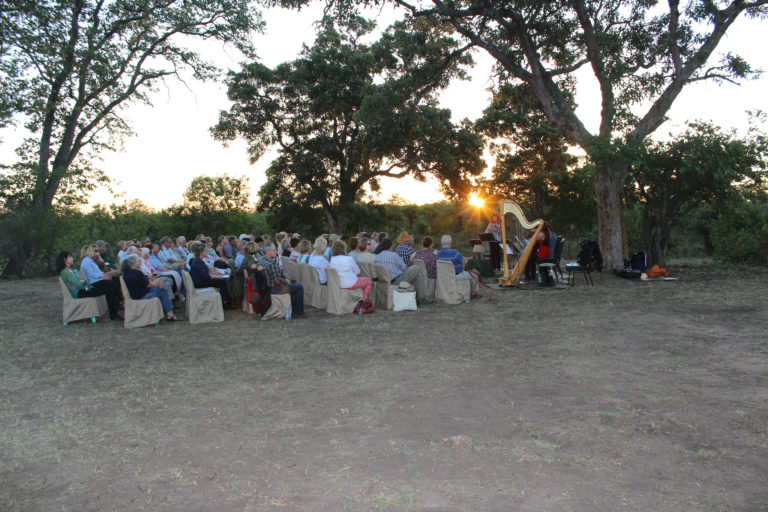
Nature has inspired many composers, from Vivaldi (Four Seasons) to Chopin (Raindrop Prelude), so an outdoor concert is most fitting.
Not much rivals sundowners in the bush. And if you’re in Kruger, enjoying sundowners at a remote, exclusive location inaccessible to the public would be pretty special. Now add classical music and you have something exceptional.
How about listening to a live chamber orchestra, with string sounds bouncing off the trunks of baobabs as hyenas cackle in the distance? Every year the Sunset Serenade event, organised by the SANParks Honorary Rangers, entices bundu bashers and music lovers alike to spend a few days in and around Mopani Rest Camp, with the sole daily mission of enjoying classical music in the outdoors.
Each day Sunset Serenade guests are driven from Mopani to a different remote location in the bush. As the sun begins to set, melodies fill the evening air, making for some interesting interactions with curious wildlife. Even elephants have, on occasion, inched closer to suss out the concerts. With the Sunset Serenade continuing long after dark, the music often blends with the grunting of hippos. – Taryn Arnott
Cost: From R9 800 per person sharing for three concerts, three dinners and four nights’ accommodation. Conservation fees R83 pp.
Do it: The next event will take place in May 2019, from 8 to 12 May followed by 15 to 19 May. Guests are booked in from Wednesday afternoon until Sunday morning. The concerts are held every afternoon after 3pm, while visitors’ days are spent at leisure. During each concert, a bar serves complimentary Rhino Tears wine, Amarula and bottled water. Dinner on the first night is for your own account. On every other night, attendees are treated to a buffet dinner. No children under 16. Guests must arrange their own transport to Mopani Rest Camp, which is 78km from Phalaborwa. Booking essential, via [email protected].
12. Visit ancient ruins

The monarch of Thulamela was known as the ‘Leopard King’ and researchers believe he ruled over some 3 000 subjects. There are still leopards up here, but they keep themselves scarce.
Game may not be as prolific in northern Kruger as the more popular south, but it’s rich in heritage and much quieter. Filled with protein-rich mopane veld and home to some of Kruger’s biggest elephants, the Pafuri section also preserves the ancient treasures of Thulamela. Kruger actually has more than 250 recorded archaeological sites, ranging from early Stone and Iron Age settlements to more recent historical buildings (such as our recommended accommodation, right).
Thulamela is a fascinating, stone-walled site faithfully reconstructed by local masons and reminiscent of the Zimbabwe Ruins further north. Dating back roughly 500 years, Thulamela – once the realm of King Ingwe and Queen Losha – forms part of the Zimbabwe Culture, believed to have started at Mapungubwe (west of Pafuri), then migrated to Great Zimbabwe before relocating here. More history is waiting to be uncovered at this site – only a few graves were dug up and studied, and local communities are being consulted in order to properly honour the remains.
A visit to Thulamela also includes a lofty view of the Levuvhu River – you won’t find another viewpoint quite like it in the park. – Melanie van Zyl
Cost: R240 per person, minimum two people. Conservation fee R82 per person.
Do it: The ruins can only be accessed with an armed guide on a two-hour trail from Punda Maria Rest Camp. It’s a bit of a climb over loose rocks, up a hill to a forest of baobabs. No children under 12. Book a week in advance. 0137356873
Where to stay
Kruger
Historic Russell Guest Cottage
(once the Punda Maria police quarters) is a luxury, antique-filled self-catering stay outside the main rest camp. From R2 306 (sleeps four). 0137356873 sanparks.org.za
Golden Gate
There are budget bungalows at the Basotho Cultural Village, but Highlands Mountain Retreat has the best views in the park, and is reached via the Oribi Loop game drive. From R1 500 for two. 0582550962 sanparks.org.za
13. Cycle a desert moonscape

Cycling the Richtersveld is not for sissies, but Desert Knights-inspired trails are now open to all who dare traverse the tricky terrain.
Most visitors to the Richtersveld return to the real world with tales of eerily quiet valleys, magnificent mountains and halfmens succulents clinging to the slopes. While hauling a hardy 4×4 over tricky tracks between geological masterpieces, it can be difficult to get in touch with the finer aspects of this landscape. Those keen to tackle the desert at a slower pace are now able to do so on a bicycle, to immerse themselves in this otherworldly space.
Three new cycling trails – open to hikers and runners too – starting at Sendelingsdrift have recently been introduced after the many successes of the Desert Knights mountain-bike adventures hosted in the park. Along the trails, riders will see iconic quiver trees, boulders the size of cars and, while stopping for a break, delicate succulents sprouting from the ground.
The seven-kilometre Moonscape Trail has a few technical sections but is not too far from the camp, so a great option for casual cyclists. The more challenging nine-kilometre Gambler Trail is a bit tricky and rated blue for mountain bikers, with some steep climbs before a relaxed descent. The 15-kilometre Impaler Trail, rated red, is not for the faint-hearted; it features a few rises, challenging paths, and steeper climbs and drops than the Moonscape. (If you’re a daredevil, ask about the short drop-off burst on Helskloof, which has views of the Namib Desert over the border.) – Taryn Arnott
Cost: Free. Conservation fee R71 per person.
Do it: Riders must bring their own bikes, protective gear and plenty of water. These brand-new trails are clearly raked; phone ahead to let the park know you want to ride and they will assist with directions and pointers. Only groups of two or more are allowed (no riding alone permitted). 0278311506

